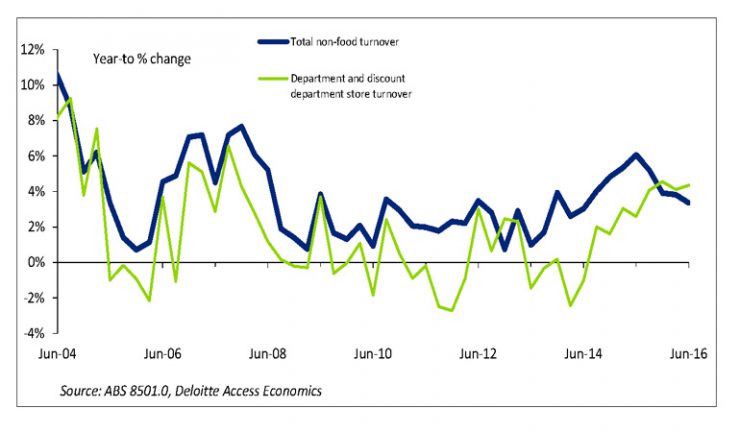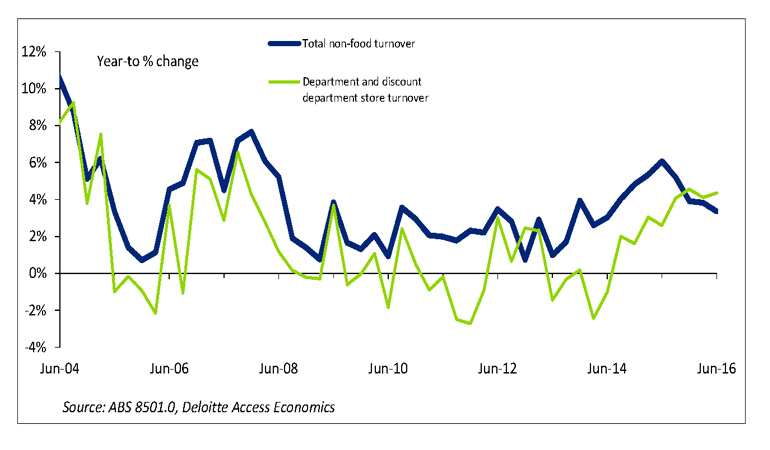
By Kymberly Martin
Households still benefiting from low interest rates.
While weak income growth is squeezing food sales, non-food categories are still benefiting from low interest rates and asset price inflation, according to Deloitte Access Economics data.
Strong growth in the housing market, particularly in New South Wales and Victoria, has spurred household goods turnover, characterised by growth in clothing and department stores. “These new growth categories are driven as much by supply side circumstances as they are by demand, according to Deloitte partner, David Rumbens. He said transformation strategies by Myer, David Jones and Kmart/Target, as well as hype surrounding competitive international entrants has had a huge effect on turnover in these categories.
Overall, real (inflation-adjusted) retails sales growth was 2.4% over 2015-16, which was a moderate rate compared with the 3.3% growth seen over 2014-15. “We expect retail sales growth could slow even further to 2.0% over 2016-17, before recovering to 3.0% over 2017-18,” Rumbens said.
“Interest rates are expected to be lower for longer, as inflation is barely registering and while growth is OK, it is below trend globally and at risk of returning below trend here.”
Australia’s economic growth slowed in the June quarter to 0.5%, data released today by the Australian Bureau of Statistics showed. This was down 1.0% the economy experienced in the March quarter. GDP growth in the June quarter was driven by domestic demand, which rose 0.6% supported by ongoing growth in household and public consumption.
Putting a positive spin onto today’s June Quarter National Accounts figures was Treasurer Scott Morrison: “2015-16 was Australia’s 25th consecutive year of economic growth and show our economy growing at the fastest rate in four years. Our economy is growing faster than every G7 economy, well over twice as fast as the United States and Canada and well above the OECD average. Economic growth in the June quarter was driven by household consumption, public investment and dwelling investment, more than offsetting the continued and expected decline in resources investment.
“Dwelling investment rose by 1.6 per cent in the June quarter to be 8.3 per cent higher through the year. Households are responding to record low interest rates and we are seeing strong growth in housing supply. The considerable pipeline of work to be commenced provides confidence that dwelling investment will hold up for some time,” the minister said.

